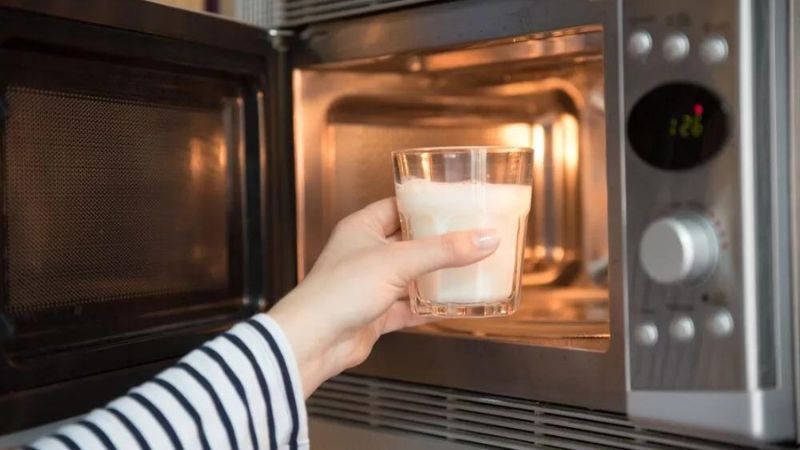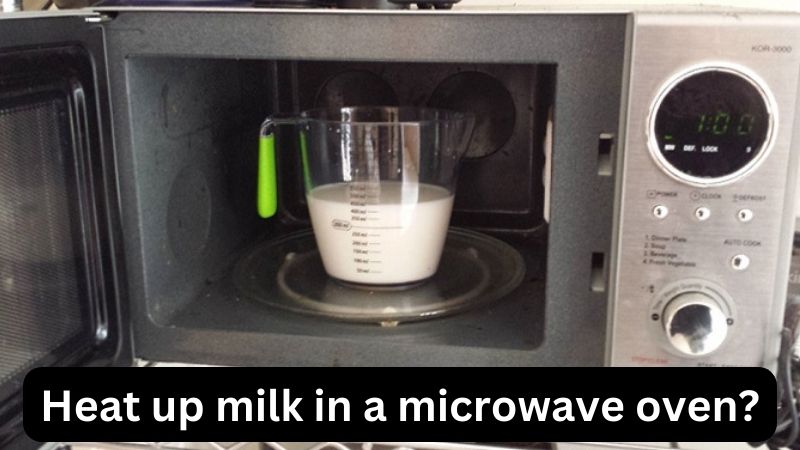Microwaving milk for various purposes has become a common practice in many households. It offers a convenient and quick way to warm milk for beverages, recipes, or baby bottles. However, it is crucial to understand the safety considerations associated with this cooking method. In this comprehensive guide, we will explore the topic of microwaving milk and provide you with essential information and insights to help you make informed decisions.
Table of Contents
Understanding Microwave Heating
Microwaves are electromagnetic waves that generate energy used for heating and cooking food. When microwaves interact with water molecules present in foods like milk, they create thermal energy, resulting in heat production. It’s important to recognize that liquids with high water content, such as milk, can heat unevenly and pose certain risks in the microwave.
Safety Considerations when Heating Milk in a Microwave
One of the main challenges when microwaving milk is the potential for it to become too hot and boil over. This not only creates a messy cleanup but also poses a risk of burns or scalding. Furthermore, prolonged exposure to high temperatures may cause nutrient loss and alter the proteins in the milk.
To ensure safe microwaving of milk, it is crucial to be aware of these risks and take proper precautions. By following recommended practices, you can minimize the likelihood of accidents and preserve the nutritional value of the milk.

Recommended Practices for Safely Heating Milk in a Microwave
To ensure safety and obtain optimal results when heating milk in a microwave oven, consider the following tips:
- Use microwave-safe containers: Choose containers specifically designed for microwave use and ensure they are free of metal parts or coatings.
- Stir the milk thoroughly: Before heating, stir the milk thoroughly to ensure the even distribution of heat and prevent hotspots.
- Heat in short intervals: Instead of microwaving milk for a long duration, heat it in short intervals, pausing to stir and check the temperature. This helps to prevent overheating.
- Check the temperature: Before consuming or using the milk, check the temperature by testing a small amount on your wrist or with a food thermometer. The ideal temperature for most purposes is around 140°F (60°C).
Alternative Methods for Heating Milk
If you prefer not to use a microwave or want to explore other options, there are alternative methods for heating milk:
- Stovetop heating: Heat the milk in a saucepan on low to medium heat, stirring occasionally until it reaches the desired temperature. This method allows for more control over the heating process.
- Electric milk frother: Electric milk frothers often come with heating functionality, allowing you to heat milk to the desired temperature while frothing it simultaneously.
Consider the pros and cons of each method and choose the one that best suits your needs in terms of convenience, control, and safety.
Tips for Enhancing Microwave Milk Heating Experience
To enhance your microwave milk heating experience and achieve optimal results, consider the following additional tips:
- Cover with a microwave-safe lid: Prevent milk skin formation by covering the container with a microwave-safe lid or using a microwave-safe whisk to keep the milk smooth and creamy.
- Monitor the heating process: Keep a close eye on the milk as it heats in the microwave. Remove it promptly when it reaches the desired temperature to avoid overheating.
- Use low-heat settings: If your microwave has power settings, opt for a lower setting to heat the milk more gently and reduce the risk of overheating.
Conclusion
Heating milk in a microwave oven can be a convenient option when time is of the essence. However, it is essential to understand the safety considerations associated with this method and follow recommended practices for optimal results. By using microwave-safe containers, stirring the milk, heating in short intervals, and checking the temperature, you can safely and effectively heat milk in a microwave.
Alternatively, you may explore stovetop heating or electric milk frothers as alternative methods. Consider your preferences and prioritize safety when choosing the best method for heating milk. With the knowledge and tips provided in this guide, you can confidently heat milk in a microwave and enjoy warm and delicious beverages or recipes.
